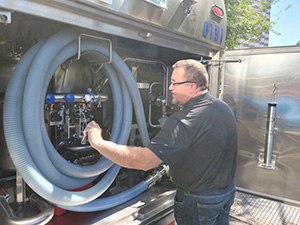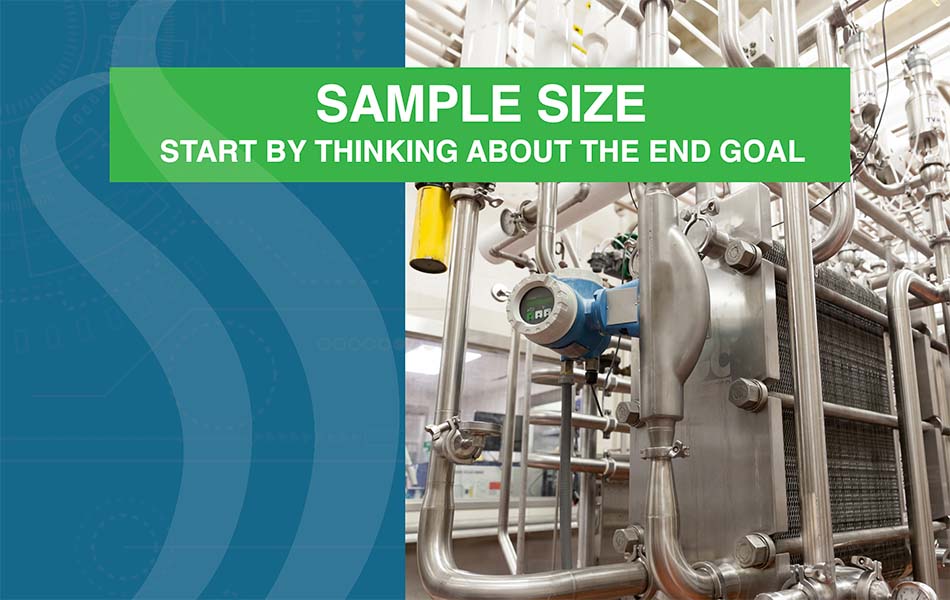Aseptic Sampling for Quality Control—Representative or Grab Sampling?
Aseptic sampling for quality control is essential for quality management in dairy plants plants. A dairy processor can only be assured of final product quality if strict, comprehensive sampling and testing protocols are followed throughout the process, from unloading the milk at the plant to the finished product.
Aseptic and representative sampling for dairy plants is crucial for accurate test data. However, there are limited applications where representative sampling may not be practical, and a grab sample is taken instead.
Keep in mind that the end goal will help determine which sampling type you choose. Accurate sampling always needs to be aseptic, meaning that both sterile equipment and aseptic techniques are used.
What is a representative sample?
A representative sample is larger in volume and collected over time through a sterile pathway and into a sterile bag or other collection devices. The sample is representative of an entire column of milk or process. Using a peristaltic pump for collection improves the accuracy and representation of the sample.
“A [representative] sample represents the quality of the entire volume of the product under consideration.”
(Source: AgriQuora)
What is a grab sample?
A grab sample is small in volume, generally taken with a sterile syringe, and is not collected over time. It is a ‘snapshot’ of the process or product. For example, a grab sample taken off the pasteurizer reflects the product moving through at that moment and is not a sample of the entire run.
How to decide between representative sample and grab sampling
 A representative sample should be used to test raw milk. Raw milk stratifies over time, which means the milkfat, somatic cells, and bacteria rise to the top. Therefore, agitation is required because the milk components are not mixed homogeneously due to the large volume of tanks and trucks. So, a raw milk sample taken from the top of a tank or truck does not accurately measure the entire milk column.
A representative sample should be used to test raw milk. Raw milk stratifies over time, which means the milkfat, somatic cells, and bacteria rise to the top. Therefore, agitation is required because the milk components are not mixed homogeneously due to the large volume of tanks and trucks. So, a raw milk sample taken from the top of a tank or truck does not accurately measure the entire milk column.
The longer the milk is in a tank or a tanker truck, the greater the degree of stratification, even with agitation. Using a QualiTru Tank Port or Adjustable Tanker Por with Security Lid to pull a representative sampling helps ensure that payment and analysis are based on accurate data. Eliminating agitation also saves time, increasing efficiency at the receiving bay. A representative sample is also critical for accurate inline processing to monitor post-pasteurization contamination and chemicals.
In addition, the representative sample is crucial for verifying microbiological or Standard Plate Counts (SPC) and documenting Critical Control Points (CCP) to ensure the equipment meets specifications and an optimized system. For Clean in Place (CIP), representative sampling can help verify hygiene effectiveness. Representative sampling is also effective for troubleshooting by setting up strategic sample points to compare bacteria counts throughout the process.
A grab sample should be limited to pasteurized and homogenized milk testing. When using a grab sample for pasteurized and homogenized milk, the purpose is to determine bacterial contamination.
Since the milk is no longer stratified, the milkfat is evenly distributed, and the somatic cells have been removed. Therefore, grab sampling may be used for microbiological or chemical sampling on pasteurized/homogenized milk silos and at the sampling location at the filler.
A case study for aseptic sampling for quality control in a dairy processing plant
A Dutch cheese and whey plant had variable microbiological data from a line that connected the two sites. It was a challenge because the payment was based on the results of the testing data, and because of its variability, it was deemed unreliable.
 The plant put together an aseptic and representative sampling plan with CCP along the line using the QualiTru sampling system and a peristaltic pump. This allowed the plant to track microbiological and chemical levels along the line between the cheese and whey facilities. The reliable testing data resulted in an agreement for payment and better daily tracking of the quality of the product.
The plant put together an aseptic and representative sampling plan with CCP along the line using the QualiTru sampling system and a peristaltic pump. This allowed the plant to track microbiological and chemical levels along the line between the cheese and whey facilities. The reliable testing data resulted in an agreement for payment and better daily tracking of the quality of the product.
Dairy processors had dual objectives of ensuring food safety and improving operational efficiencies. Process monitoring is a necessary component of a quality control program to achieve these goals.
Effective process monitoring requires aseptic and representative sampling for accurate data, with limited applicability for grab sampling.
Read the Dutch Ingredients Plant Case Study.




